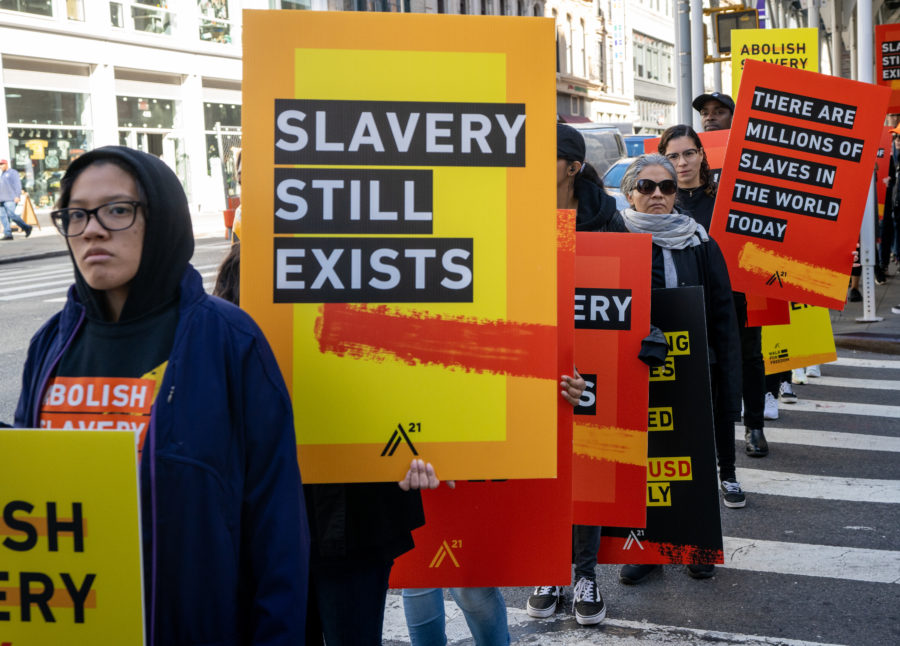Why awareness matters: The truth about human trafficking
Human trafficking occurs in the U.S. too, not just in other countries
Human trafficking protest. Via Victoria Pickering/Flickr.
On March 23, the Mt. SAC Equity Center held a human trafficking awareness workshop to teach signs to look for if someone is in possible danger and how to support them. People imagine young girls as the typical victims of trafficking, but the truth is, anyone can fall prey to the crime, so it is important to be able to spot the signs and provide help.
The workshop began with a mindful trigger warning where the presenter reminded attendees that they were in a safe space.
Julyssa Guevara, a 31-year-old social worker for Mt. SAC’s Rising Scholars program, advised recognizing who your allies are and bringing attention to this issue. It is important to spread awareness and let people tell their stories.
According to a presentation shown during the workshop, 20% of trafficking victims are children, 29% are men and boys, 58.7% are part of the LGBTQ community and 72% are immigrants.
There is no defining trait of a human trafficker: they can be anyone, from strangers to family members and may operate alone or in groups.
Per the Trafficking Victims Protection Act of 2000, the U.S. Department of Health and Human Services categorizes sex and labor trafficking as two “severe forms” of the crime.
It defines sex trafficking as, “the recruitment, harboring, transportation, provision, obtaining, patronizing or soliciting of a person for the purpose of a commercial sex act, in which the commercial sex act is induced by force, fraud, or coercion or in which the person induced to perform such act has not attained 18 years of age.”
Labor trafficking is defined as, “the recruitment, harboring, transportation, provision, or obtaining of a person for labor or services, through the use of force, fraud, or coercion for the purpose of subjection to involuntary servitude, peonage, debt bondage, or slavery.”
The workshop’s presentation mentioned that there are many ways to be an ally and help people who you suspect are in danger. However, there are also things you should not do when approaching someone who is possibly in danger.
Keep in mind, the most important thing is to keep yourself safe.
When in contact with a possible victim, let them know that you care about their safety and well-being – establishing trust enables you to help them more efficiently and brings them some assurance. Also make sure to take mental notes about anything that seems important such as tattoos, clothes, cars and other identifying characteristics.
Certain hallmarks may be used to point out someone who needs help: hand signals, identification documents and responses that feel scripted or rehearsed are some common traits. Keeping a keen eye is critical.
When approaching a victim about their situation, one thing to not do is pressure them to leave the trafficker. The situation may be complex and they may have valid reasons for staying, such as threats to their families and their own well-being.
There will be another opportunity to learn more about the issue of human trafficking with the sociology department which is set to host a human trafficking awareness conference on Tuesday, May 30, in Building 13 from 1 p.m. to 2:30 p.m.
Mt. SAC provides support by contacting Ryan Wilson, Title IX’s coordinator, who can be reached at (909) 274 -5423 and police and campus safety who can be reached at (909) 274-4555.
If you see something, say something.



